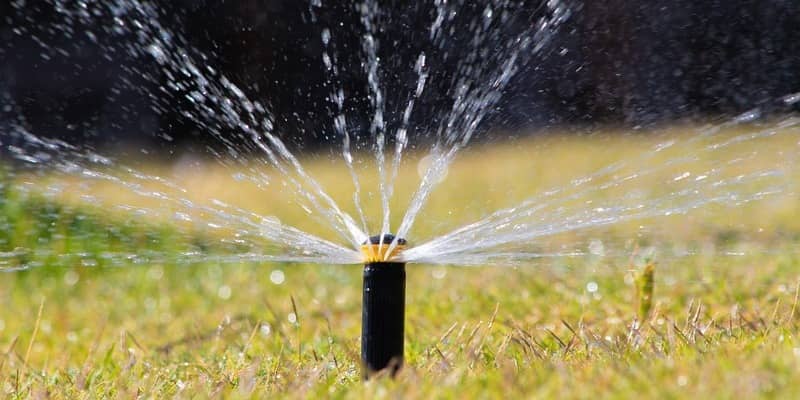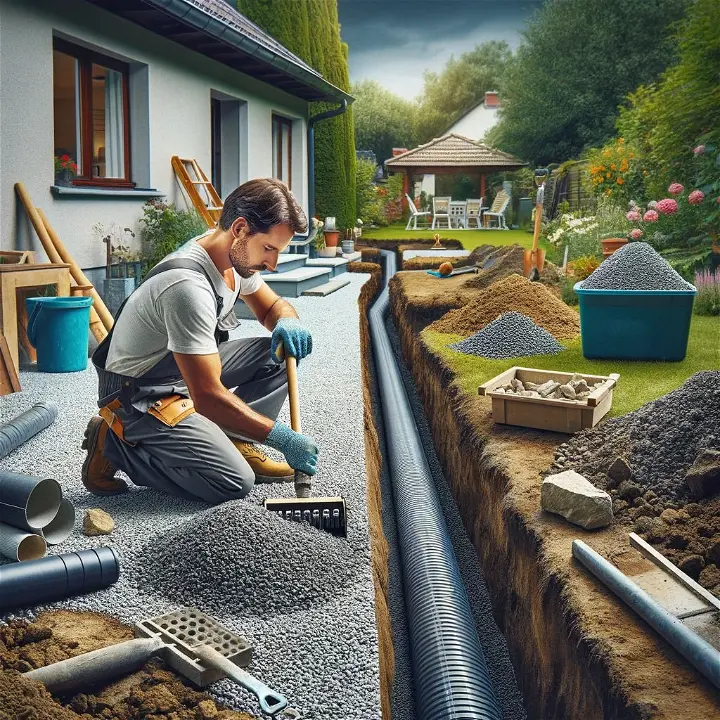How to Fix Lawn Drainage Issues After Heavy Rain
By Innovation Grounds
Heavy rain can cause serious drainage issues in your lawn, leading to waterlogged, soggy patches that can affect your grass and landscaping. If you’ve noticed puddles lingering long after a storm, it’s crucial to address the underlying drainage problems before they cause permanent damage. Fortunately, with a few practical solutions, you can restore the health of your lawn and prevent future drainage issues.
In this guide, we’ll explore several ways to fix lawn drainage issues after heavy rain, providing you with expert tips on improving water flow, preventing soil erosion, and ensuring a vibrant, healthy lawn.
Understanding Lawn Drainage Problems
Before diving into solutions, it’s essential to understand why lawn drainage problems occur in the first place. Heavy rainfall overwhelms the ground’s ability to absorb the water, leading to pooling on the surface. Common causes of poor drainage include:
Compacted Soil: Soil that’s too dense doesn’t allow water to pass through easily, leading to water retention.
Low-Lying Areas: Lawns with areas lower than the surrounding landscape can accumulate water, creating puddles.
Improper Grading: If the slope of your yard isn’t correct, water may not flow away from the house as it should.
Obstructed Drains: Blocked gutters or downspouts can cause water to collect around the foundation or lawn.
Aerate Your Lawn to Improve Water Flow
Aerating your lawn is one of the most effective ways to improve drainage. Over time, the soil can become compacted, reducing its ability to absorb water. Lawn aeration involves perforating the soil with small holes, allowing water, air, and nutrients to penetrate deeper into the ground.
How to Aerate Your Lawn:
Use a core aerator (available for rent or purchase) to pull out small plugs of soil, creating holes for water to drain through.
Aerate in early spring or fall when the ground is moist, but not too wet.
If your lawn is consistently soggy, you may want to aerate more frequently.
Aeration helps reduce puddling, encourages root growth, and speeds up the drainage process, especially after heavy rain.

Regrade Your Lawn to Direct Water Away
Another solution for fixing lawn drainage issues is to regrade your yard. If your lawn has low areas where water collects, you may need to raise those spots to prevent further pooling. Proper grading ensures that water flows away from your house and toward the lawn’s drainage points.
How to Regrade Your Lawn:
Identify the areas that accumulate water and need to be raised.
Add soil to low areas and gently slope the ground toward a drainage system, such as a French drain or dry well.
Ensure the grade slopes away from buildings and structures to prevent water from flowing toward your home’s foundation.
Regrading your lawn can be a more significant project, but it can prevent water damage to both your yard and your home.

Install a French Drain to Manage Excess Water
A French drain is a popular solution for areas with chronic waterlogging. This system involves digging a trench, laying down a perforated pipe, and covering it with gravel to help water flow away from problem areas.
How to Install a French Drain:
Dig a trench where water tends to accumulate.
Lay down a perforated pipe, ensuring the pipe has a slight slope to guide water away.
Fill the trench with gravel and top it off with soil.
Ensure the pipe leads to a lower area, such as a dry well or a storm drain.
French drains are highly effective for managing excess water, particularly in areas where puddles persist after rainfall.

Create a Rain Garden to Absorb Water Naturally
A rain garden is a beautiful and eco-friendly way to address drainage problems while adding aesthetic value to your lawn. These gardens are designed to collect runoff and allow water to slowly infiltrate the ground. Rain gardens are especially beneficial for yards with poor drainage because they prevent erosion and water pooling.
How to Create a Rain Garden:
Choose a low area where water tends to collect.
Select native plants that can tolerate wet conditions and absorb excess water.
Design the garden with a slight slope to allow water to flow into the plants’ roots.
Incorporate mulch and rocks to help with water absorption and prevent erosion.
Not only does a rain garden solve drainage issues, but it also supports local wildlife and improves your lawn’s aesthetics.

Improve Soil Quality with Organic Matter
If your lawn’s soil is too clayey or compacted, adding organic matter can improve drainage. Organic matter, such as compost, helps break up dense soil and promotes better water absorption. Healthy, well-aerated soil will also reduce the likelihood of waterlogging after heavy rain.
How to Improve Soil Quality:
Spread a layer of compost or well-rotted manure across your lawn.
Use a rake to mix the organic matter into the top few inches of soil.
Aerate the lawn to allow the organic matter to penetrate deeper.
Adding organic material not only improves drainage but also enhances soil fertility, encouraging strong, healthy grass growth.

Conclusion
Lawn drainage issues after heavy rain are a common problem, but with the right solutions, you can fix the problem and prevent it from recurring. Whether it’s aerating your lawn, regrading the landscape, installing a French drain, or creating a rain garden, there are many effective strategies to manage excess water and improve your lawn’s health.
Addressing drainage problems early ensures a healthier lawn and helps protect your home from potential water damage. By following these expert tips, you can enjoy a vibrant, well-drained lawn all year round.


